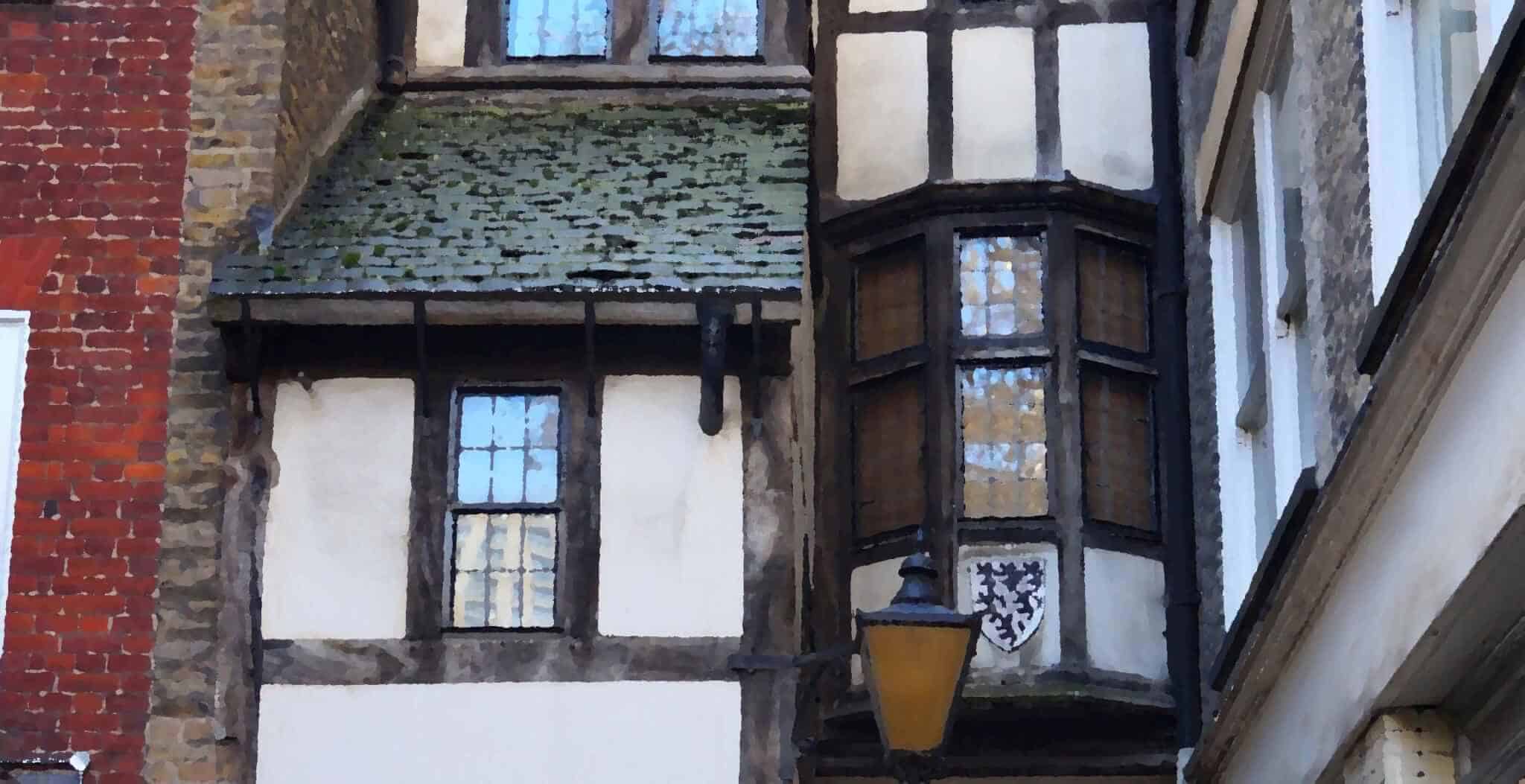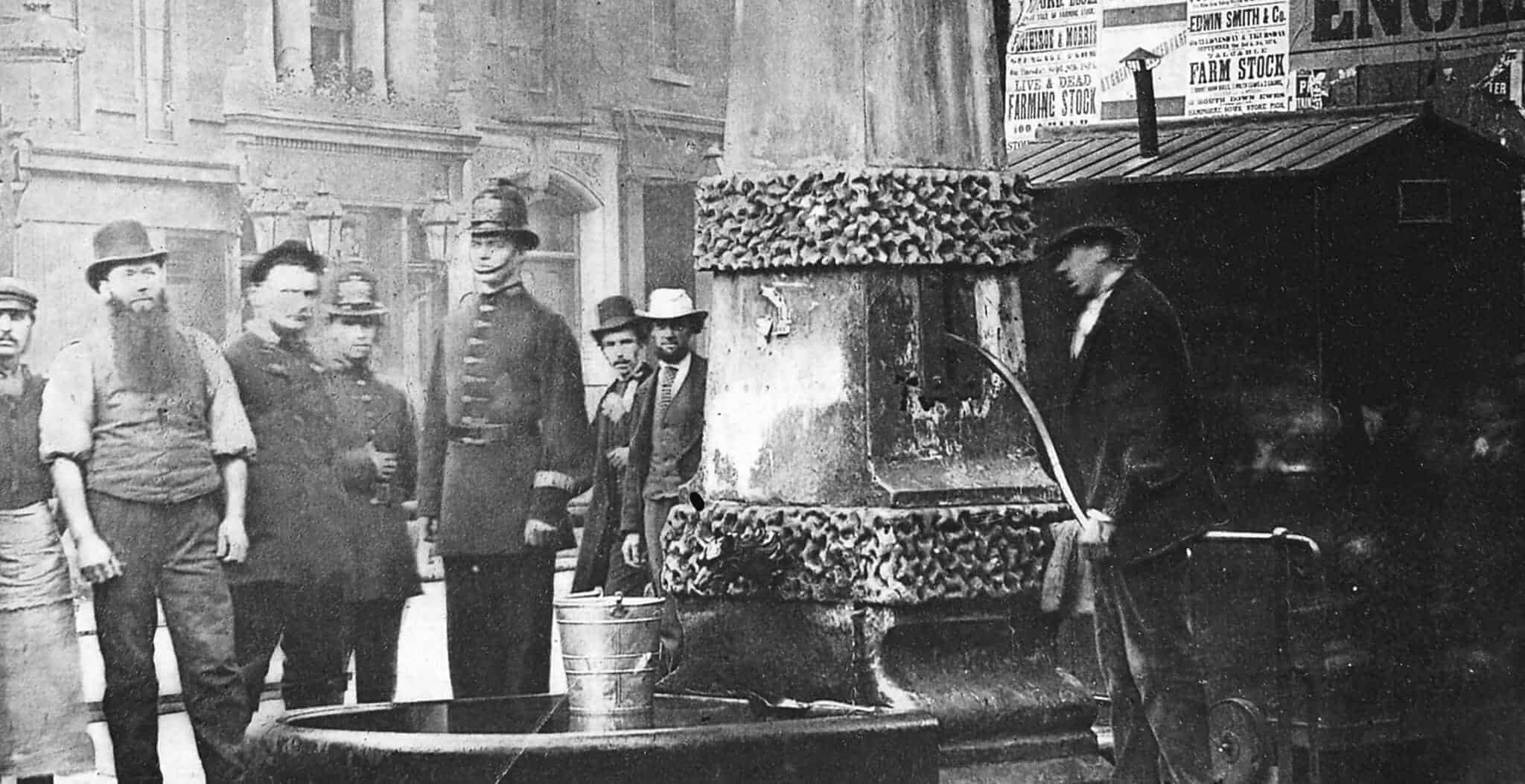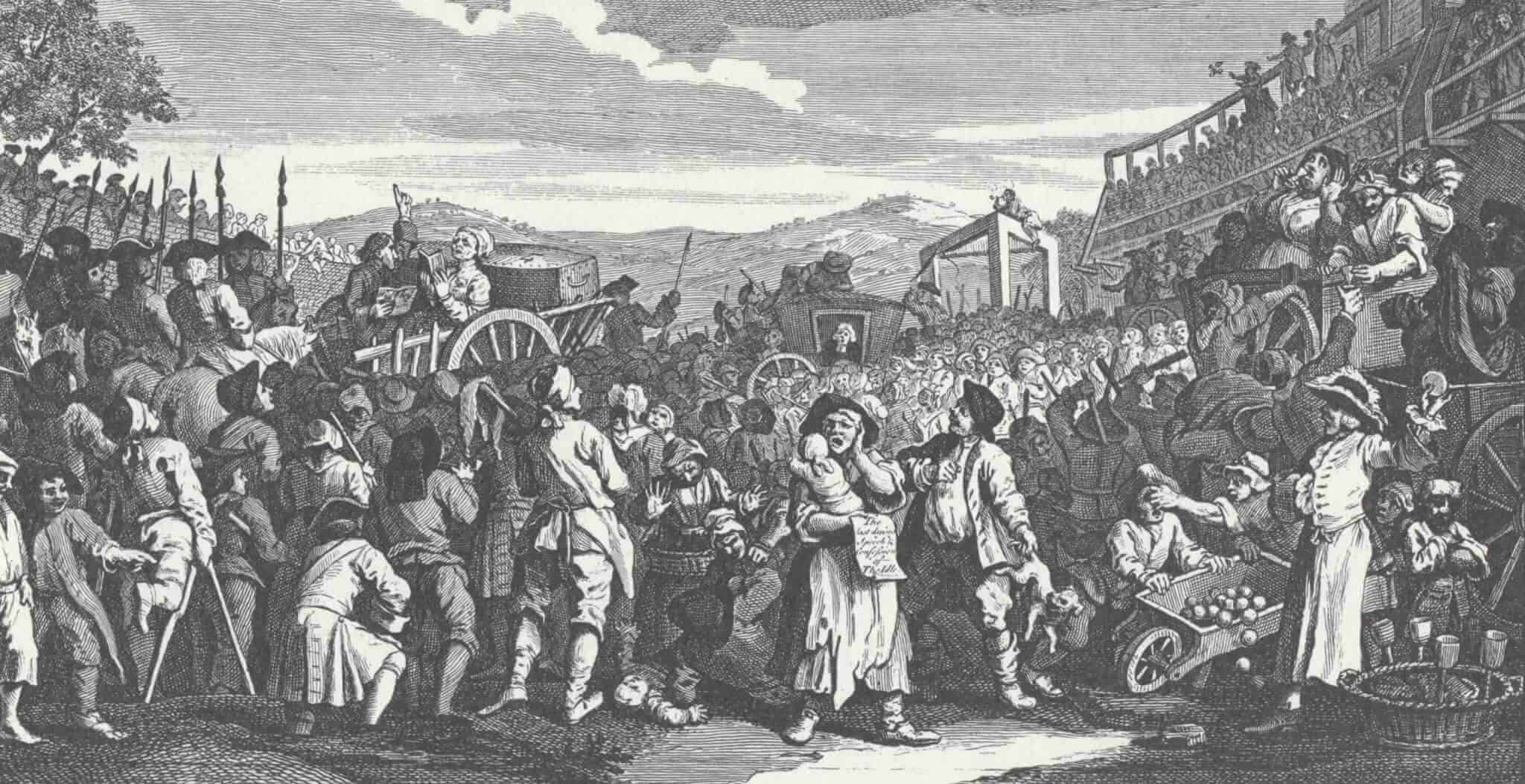Standing proudly at the entrance to one of the oldest churches in the City lies St Bartholomew’s gatehouse, a rare survivor of Tudor London.
The church that the gatehouse protects, St Bartholomew-the-Great, was founded in 1123 as an Augustinian priory. Although remaining relatively unscathed for the first few centuries of its existence, the dissolution of the monasteries in 1536 saw a substantial amount of the building destroyed, including the nave.
Some fifty years later in 1595 a local resident called William Scudamore seized the opportunity to build a new residence atop the remains of the nave’s southern doorway, specifically a two storey timber framed house with a small attic. Although the residence was relatively modest by Tudor standards, what it lacked in grandeur it more than made up for in location and was – quite miraculously – spared from the Great Fire of London in 1666 by the huge walls of the neighbouring priory.
 Indeed, the priory walls saved not only the gatehouse but also the vast majority of houses on nearby Cloth Fair. One of these surviving houses (no. 41) is still standing to this day.
Indeed, the priory walls saved not only the gatehouse but also the vast majority of houses on nearby Cloth Fair. One of these surviving houses (no. 41) is still standing to this day.
At some point in the 18th century a Georgian facade was built over the Tudor timber and the original building faded into obscurity. For the next two centuries St Bartholomew’s Gatehouse was used as a shop, and it was not until bomb damage from a German Zeppelin raid in 1917 that the original frontage was revealed.
Fully restored in 1932, the building is now Grade II listed and even retains some of the 13th century stonework from the original nave. On the first floor of the property there is bolection-moulded panelling from around 1700, whilst the attic boasts original panelling dating back to 1595.
Some interesting facts about the gatehouse:
- Contrary to popular belief, this is not the house where Queen Mary ate chicken and drank red wine whilst watching Protestant martyrs burn at the stake; in fact, Mary had died some forty years before the Tudor gatehouse was even built! That being said, most of the London martyrs were burnt just a few hundred yards away in Smithfield so the location of the ‘feast’ could indeed be accurate.
- The gatehouse was used as a school between 1948 and 1979.
- William Wallace was hanged, drawn and quartered within 100 metres of the site of the gatehouse.
Getting here
St Bartholomew’s gatehouse is easily accessible by both bus and rail, please try our London Transport Guide for further information.









